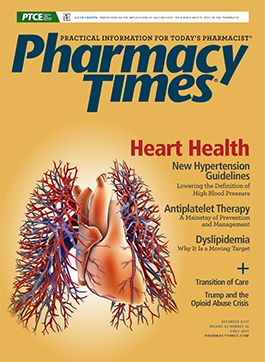Publication
Article
Pharmacy Times
Chicago Acts to Address Pharmacist Workload and Patient Safety
Author(s):
The City Council Committee on Finance approved a measure that restricts pharmacists to filling orders for no more than 10 patients per hour.
Management students might remember Frederick W. Taylor, a 19th-century American engineer who has been called the father of scientific management. He introduced time studies and recognized that workplace productivity could be greatly enhanced by closely observing workers and eliminating wasted time and motion. Taylor did not escape criticism from labor organizations that his emphasis on production was extreme and that he failed to consider the “human” equation in the workplace. Fast forward to today. Taylor’s methods have morphed into metrics, in which an organization measures employee behavior, activity, and performance. Are modern metrics simply Taylor on steroids?
Many have decried that prescription errors are related to the increasing pressure facing pharmacists to fill more prescriptions. Additionally, pharmacists are asked to provide services such as vaccinations, adherence calls, and other ancillary activities. Recently, NBC 5 in Chicago, Illinois, reported that pharmacy metrics harm consumers by preventing pharmacists from delivering the safest and best care that patients deserve and have a right to expect.1
Since 1992, the FDA has received about 30,000 reports of medical errors. The number of errors might be even higher because these reports are voluntary.2 Investigators have found that the number of medication errors increased with the number or orders verified per pharmacist per shift.3 Medical errors are said to be a leading cause of mortality in the United States.4
The Chicago City Council has stepped into the fray, proposing a number of restrictions on pharmacies. The City Council Committee on Finance approved a measure that restricts Chicago pharmacists to filling orders for no more than 10 patients per hour. The measure also requires pharmacies to notify customers when a pharmacist or a pharmacy technician has worked a shift of more than 8 hours.
Committee Chairman Edward Burke said that these measures and others are necessary to reduce “undue levels of stress” on pharmacists and address the potential danger faced by patients. The measure also contains a requirement that pharmacists be provided a 30-minute meal break and two 15-minute breaks when they work at least a 7-hour shift. Most important, the measure would prohibit pharmacies from using metrics or productivity quotas related to promotions or vaccinations.
A recent article in the Chicago Tribune cited a growing number of pharmacists complaining about their increased duties in so-called high-volume pharmacies. The newspaper tested 255 pharmacies to see how often stores would dispense risky drug pairs without warning patients. An alarming 52% of the tested pharmacies sold the medications without mentioning the potential interaction.5
Of course, there could be unintended consequences from these attempts at regulation. Some consumers could simply shop outside the Chicago city limits. It may become unduly burdensome for less mobile Chicago residents to obtain prescriptions and other necessary services. Some services may be unavailable to Chicago consumers. What is clear is that if the pharmacy profession does not act, legislators will.
It is imperative that management appreciate that the practice of pharmacy is more than a business. Should management continue to value profits at the expense of patient safety, there will be additional attempts to regulate the practice of pharmacies.
We can begin by initially considering some positive and realistic steps to effect meaningful change, such as:
1. Ancillary pharmacy services such as vaccinations are consuming more of a pharmacist’s time. These services are typically provided on a first-come, first-served basis. The scheduling of appointments for these services would permit pharmacists to focus on ensuring that prescriptions are accurate and fully counseling pharmacy patients.
2. A considerable amount of a pharmacist’s time is devoted to resolving insurance issues. These issues could be handled off-site or by a team of insurance specialists. This time-saving measure would allow pharmacists to concentrate on filling prescriptions and enhancing patient safety.
3. Metrics in the pharmacy industry are typically tied to performance and compensation. They should be consistently evaluated to ensure that goals are realistic and attainable and positively account for patient safety. Pharmacists are important stakeholders in any pharmacy environment. Management must include pharmacists in any discussion of performance metrics. Patient health and safety must remain the top priority.
Richard E. Custin, MEd, JD, LLM, is a clinical professor of business law and ethics at the University of San Diego School of Business in California. He also serves as an affiliate professor at the Joan B. Kroc School of Peace Studies at the university.
References
- Coffey C. Family says pharmacy error nearly killed boy. NBC 5 Chicago website. nbcchicago.com/investigations/Family-Says-Pharmacy-Error-Nearly-Killed-Boy--24741395html. Published February 26, 2014. Accessed November 2, 2017.
- Strategies to reduce medication errors: working to improve medication safety. US Food and Drug Administration website. www. fda.gov/Drugs/ResourcesForYou/Consumers/ucm143553.htm. Updated October 23, 2015. Accessed November 10, 2017.
- Blank C. Pharmacist error rate rises as workload climbs. Drug Topics website. drugtopics.modernmedicine.com/drug-topics/news/pharmacist-error-rate-rises-workload-climbs. Published September 11, 2015. Accessed November 10, 2017.
- Allen M, Pierce A. Medical errors are No. 3 cause of U.S. deaths, researchers say. NPR website. npr.org/sections/health-shots/2016/05/03/476636183/death-certificates-undercount-toll-of-medical-errors. Published May 3, 2016. Accessed November 10, 2017.
- Long R, Roe S. Chicago moves closer to easing pharmacist workload. Chicago Tribune. chicagotribune.com/news/watchdog/druginteractions/ct-pharmacy-rules-chicago-met-20171010-story.html. Published October 10, 2017. Accessed November 10, 2017.







